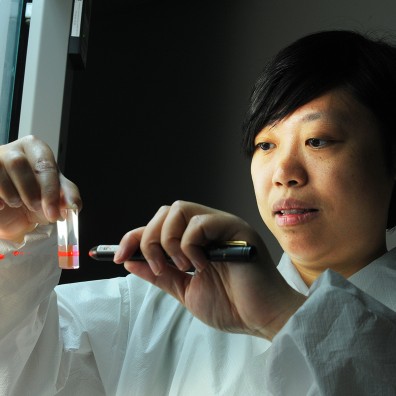A research team led by Qun "Treen" Huo from the University of Central Florida NanoScience Technology Center has developed a more accurate test that not only diagnoses the presence of prostate cancer but also the level of aggressiveness of the cancer, thus paving the way to treat the cancer more effectively.
 Dr. Qun "Treen" Huo works with nanoparticles in her lab at the University of Central Florida in Orlando. (Credit: University of Central Florida)
Dr. Qun "Treen" Huo works with nanoparticles in her lab at the University of Central Florida in Orlando. (Credit: University of Central Florida)
Finding out the level of aggressiveness of the prostate cancer may eliminate the unnecessary removal of the gland and help physicians to treat their patients with other less radical options.
In the test, the research team uses gold nanoparticles that are capable of detecting a particular chemical reaction between the human immunoglobulin G (IgG) and a prostate cancer. Research has demonstrated that IgG tends to attach to the gold nanoparticles’ surface to create a protein corona, which is detectable by the nanoparticle-enabled dynamic light scattering assay (NanoDLSay) technique.
Huo discovered that the presence of cancer cells lead to the destruction of the IgG circulating in the blood and the gold nanoparticles picked up this particular interaction. Utilizing this simple test, she was able to quantitatively assess the level of aggressiveness of the prostate cancer and its capability to metastasize.
Huo stated that that the team tested the novel technique on human and animal blood samples and verified the findings in both human tissue samples and animal models. The team is currently involved in performing a validation analysis with the Florida Hospital Cancer Institute. If it is successful, clinical studies can be conducted within 2-3 years and Huo believes to bring the diagnostic tool to the market within 5 years.
The NanoDLSay technique, developed at Huo's laboratory four years ago, is used for a variety of analyses ranging from the detection of lead in water to detection of cancer in blood.